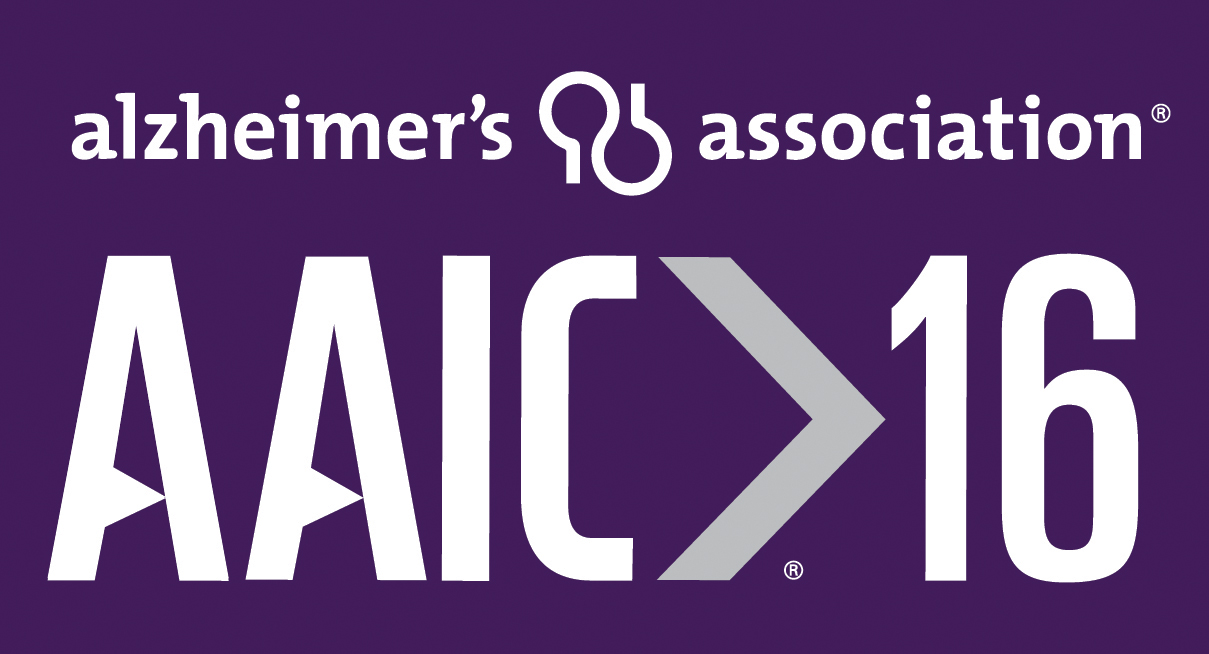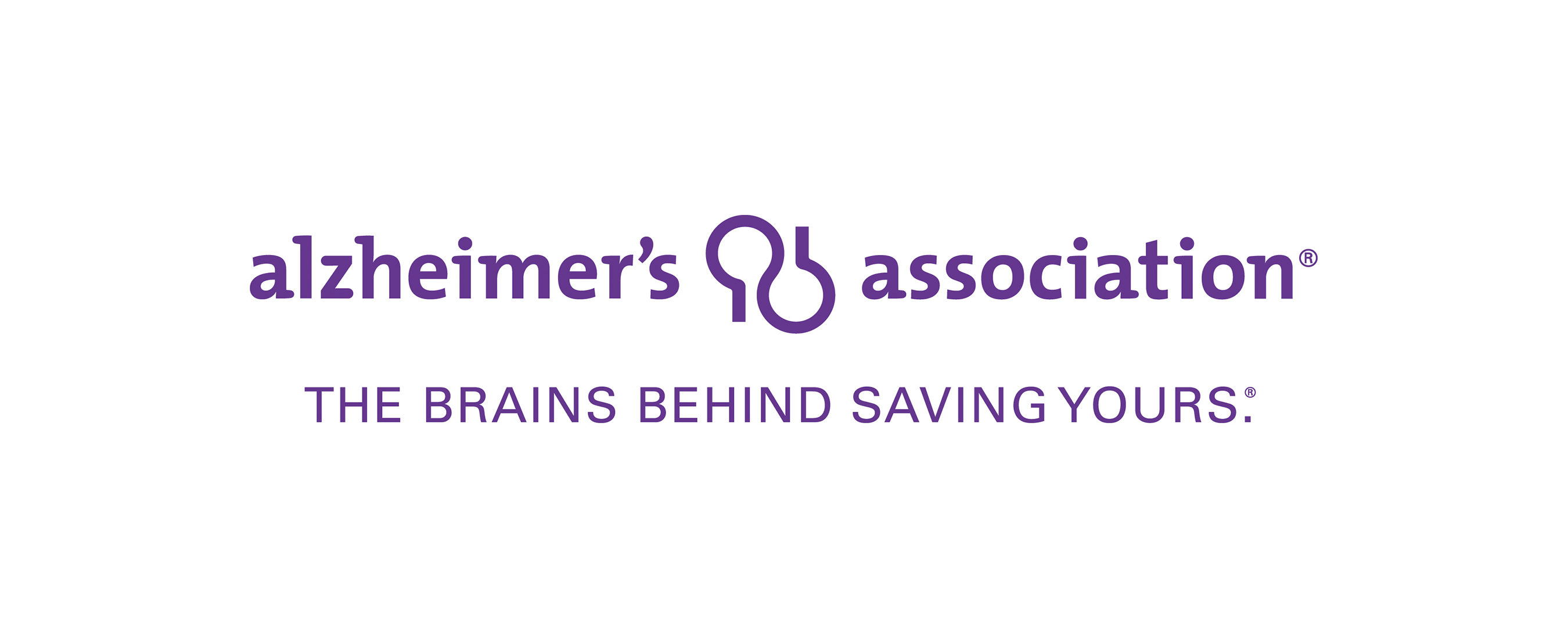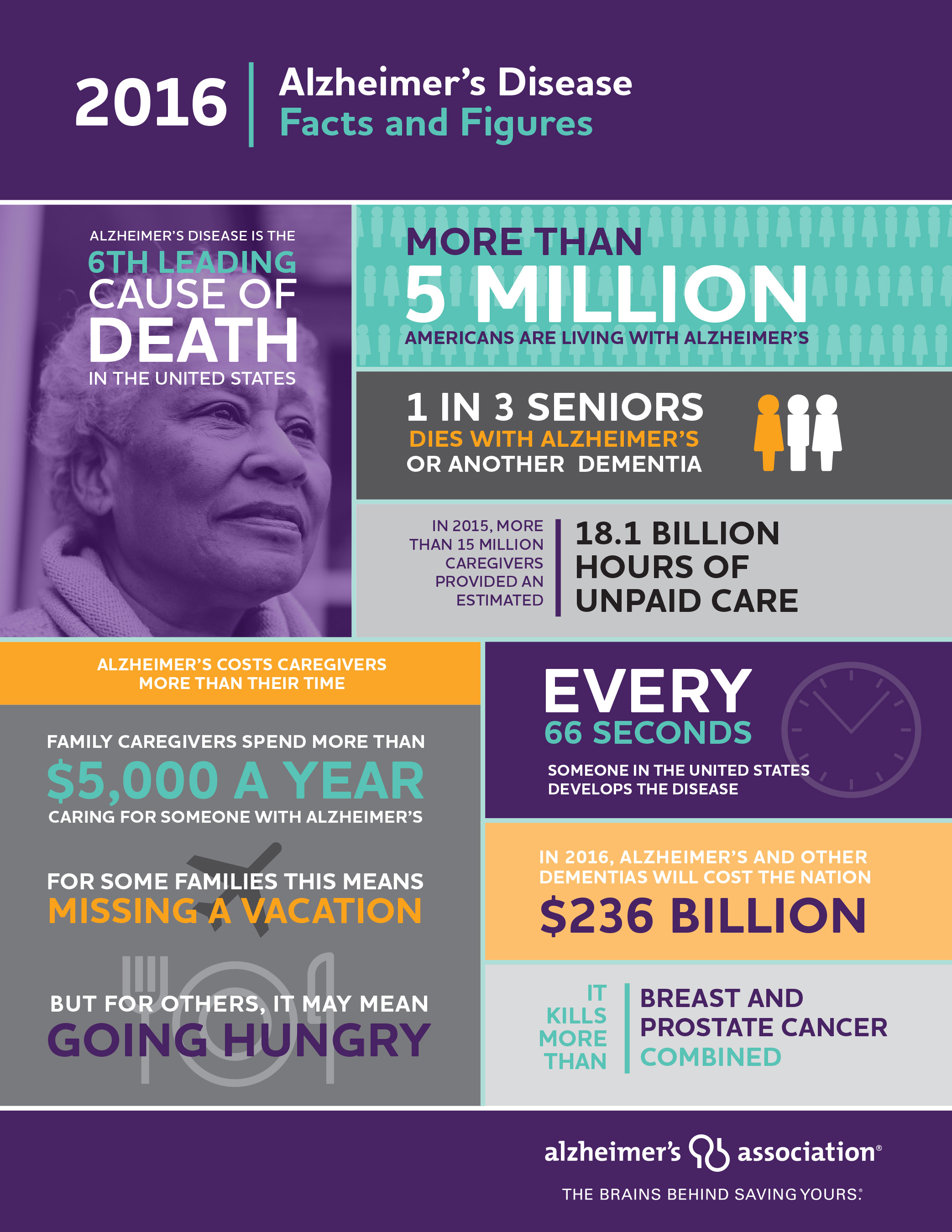

TORONTO, July 25, 2016 /PRNewswire-USNewswire/ -- Important health policy and health economic research findings were reported today at the Alzheimer's Association International Conference 2016 (AAIC 2016) in Toronto, that shed light on system changes that may lead to potential costs savings, increased survival and reduced burden of Alzheimer's disease - on individuals, families and the healthcare system. Experience the interactive Multimedia News Release here: http://www.multivu.com/players/English/7865352-aaic-2016-alzheimers-treatment/
One study revealed that even without a treatment that changes the underlying course of the disease, there is an economic benefit of ensuring people with Alzheimer's receive the current standard of care for indicated medications. The study showed that treated patients cost the healthcare system less than those who do not receive medication for Alzheimer's disease; they also had lower mortality rates during the study compared to untreated patients.
"The new results support that early Alzheimer's treatment - even with today's first generation therapies - has significant potential to benefit the person with the disease, and the economy," said Maria C. Carrillo, PhD, chief science officer, Alzheimer's Association. "Today, Alzheimer's is incurable and progressive, and some assume that treating dementia is an unjustified cost drain on our healthcare system, but this study presents compelling arguments for prescribing the standard of care."
In other studies reported at AAIC 2016:
Comparison of All-Cause Mortality Rate and Economic Burden Between Newly Diagnosed Alzheimer's Disease Patients Who Received Anti-Dementia Treatment Versus Not: A Longitudinal Retrospective Study
Because there is currently no treatment that changes the underlying course of Alzheimer's disease, few studies have examined existing medical therapies for their economic and mortality impact, including comparing treated versus untreated people with newly diagnosed Alzheimer's disease in the U.S.
Researchers sought to understand all-cause mortality rates and healthcare costs among people with incident Alzheimer's disease through a longitudinal retrospective study. They identified 6,553 incident individuals with Alzheimer's, mostly female (74.5%), average age 83, from Medicare fee-for-service claims over two years. Participants were followed until death, disenrollment or the end of the study period - whichever happened first. Patients were assigned to Treated and Non-treated groups based on whether they were prescribed an existing Alzheimer's drug after diagnosis. Groups were matched based on demographics and health status.
The researchers found that, among 1,338 matched patients:
Average health care costs more than tripled in the first month following an Alzheimer's diagnosis for all study participants. Those receiving an Alzheimer's treatment had lower overall health care costs in the month they were diagnosed compared with those who did not receive a treatment ($5,535 vs. $6,711). Following the month of diagnosis, all-cause healthcare costs decreased but the average cost per-patient per-month still remained considerably higher than baseline.
The biggest contributor to this cost increase was inpatient care, which accounted for 30% of the total expenditures for both groups. Though individuals who initiated taking medications approved for treating dementia experienced an increase in pharmacy costs, on average, their total health expenditure was less than the individuals who did not take approved medications ($2,207 vs. $2,349 per patient per month) during the follow-up period.
"The arguments for early treatment are myriad, but this study shows greater survival and less all-cause healthcare costs among those receiving treatment for dementia," said Christopher M. Black, MPH from Merck Research Laboratories. "These results indicate that choosing not to treat, or even a delay in starting treatment, may lead to less favorable results. Early diagnosis and time to treatment should be a priority for policymakers, physicians and the public."
National Estimates of Potentially Avoidable Hospitalizations Among Medicare Beneficiaries with Alzheimer's Disease and Related Dementias
The great majority of people with Alzheimer's are older adults and at least 75% of them have multiple health problems, such as heart disease and diabetes, that require regular and specific medical management. Because of its impact on memory, thinking and behavior, Alzheimer's disease can significantly complicate management of other chronic conditions, putting people with dementia at high risk for hospitalizations that may be preventable with proactive care.
Using Medicare claims data, a group of researchers from Boston and New York measured potentially avoidable hospitalization (PAH) rates for Ambulatory Care Sensitive Conditions, and the associated Medicare expenditures, for 2,749,172 people diagnosed with Alzheimer's or other dementia. PAH rates were examined for acute (i.e., bacterial pneumonia, urinary tract infection and dehydration) and chronic conditions (i.e., diabetes, cardiovascular diseases and respiratory conditions), and overall composite PAH rates.
They found that, in 2013:
"Our findings suggest that management of co-existing diseases remains suboptimal among many people with Alzheimer's or other dementias, especially those with advanced disease," said Pei-Jung Lin, Ph.D., from the Center for the Evaluation of Value and Risk in Health at Tufts Medical Center, Boston, who was first author on the study. "In 2013, for example, more than 369,000 hospital stays and $2.58 billion in Medicare costs could have been prevented with better ambulatory care and effective treatment. Case management programs for people with Alzheimer's and other dementias should involve strategies to reduce avoidable hospitalizations in order to improve patient outcomes and lower costs."
The Medicare Annual Wellness Visit as an Opportunity for Improving Detection of Cognitive Impairment: The Experience of a Large Midwestern Health System
The Medicare Annual Wellness Visit (AWV) must include an assessment of an individual's cognition. In 2013, only 11% of Medicare beneficiaries nationally used the AWV, raising concerns about whether the AWV is promoting cognitive health and early detection of cognitive impairment (CI). Researchers at Allina Health, a large Midwest health system, examined the uptake and demographics of their outpatient Medicare population that received an AWV.
Researchers extracted data from electronic health records (EHR) of 105,387 Allina ambulatory patients age 65 and older with at least one outpatient Medicare claim during the prior 12 months and at least two visits to an Allina primary clinic during the study period (1/1/11 to 3/1/15), and who consented to use of their health care data for research.
Findings revealed that 44.2% of eligible participants had at least one AWV during the study period, with annual increases in the proportions of eligible individuals participating (22.2% in 2011; 31.1% in 2014).
"The Medicare annual wellness visit can be implemented on a broad scale and sustained over time in health systems, and offers a regular opportunity to establish a baseline measurement and identify changes that may indicate Alzheimer's or another dementia," said Pamela Mink, PhD, MPH, of Allina Health, Minneapolis, and presenting author on the study. "Unfortunately, even in our study, the people most vulnerable to dementia are skipping the annual wellness visit, while healthier people show higher usage. Our ongoing research will examine how providers can use the data in subsequent clinical care."
"It is concerning to see that - even in this more successful study group - still less than half of eligible people are participating in the annual wellness visit, thus missing out on a vital opportunity for detection of cognition impairment," said Carrillo. "Policymakers and healthcare providers need to deliver a powerful message to seniors to take part in the annual wellness visit, especially those in the most at-risk groups."
From the WHO Research Priorities and Research Portfolio Analysis to the Identification of Research Gaps to Reduce the Global Burden of Dementia
Alzheimer's disease and related dementias are a global epidemic. According to the World Alzheimer Report 2015 from Alzheimer's Disease International, at least 46.8 million people worldwide were living with dementia. This number will nearly double every 20 years, reaching 74.7 million in 2030 and 131.5 million in 2050. The Report says the global costs of dementia have increased 35.4% from 2010 to 2015.
At the March 2015 World Health Organization (WHO) First Ministerial Conference on Global Action Against Dementia, 160 delegates adopted a Call for Action to reduce the global burden of dementia. The WHO's Executive Board in May 2016 noted that the response to the global burden of dementia can be greatly enhanced by a shared commitment among countries to put in place the necessary policies and resources for care of people with dementia, promote research, and give adequate priority to action against dementia in national and global political agendas.
In order to advance the global dementia research agenda and inform investment priorities, the WHO led a research prioritization exercise, and reported the results at AAIC 2016. This was the most globally representative priority setting exercise in dementia to date. WHO coordinated the process adapted from the Child Health and Nutrition Research Initiative (CHNRI) to produce the priority list. More than 200 researchers and stakeholders contributed research questions that were consolidated into 59 research avenues. These avenues were scored anonymously by 162 researchers and stakeholders from 39 countries according to five criteria: potential for success, impact on burden reduction, potential for conceptual breakthrough, potential for translation and equity.
Overarching research goals identified by the exercise were:
- Prevention and risk reduction.
- Diagnosis, biomarker development and disease monitoring.
- Drug and non-drug treatment research.
- Quality and delivery of care for people with dementia and their caregivers.
- Physiology and progression of normal ageing and disease.
- Increasing public awareness and understanding.
"Our hope is that the research priorities identified by this intensive and systematic international process will inform and motivate policymakers, funders and researchers to reduce the global burden of dementia," said Hiral Shah, MD, Columbia University Medical Center, presenting author of the study. "Future aims include identifying culture and system-specific research priorities, and identifying gaps and opportunities for increased investment."
"The urgency is clear, yet more governments still need to make funding dementia research a high priority," said Heather M. Snyder, PhD, Alzheimer's Association senior director of medical and scientific operations, and a member of the Advisory Group for the project. "Because resources are limited, even if recently increasing, there is an urgent need to set research priorities to guide policymakers and funders as they work to advance dementia research."
About AAIC
The Alzheimer's Association International Conference (AAIC) is the world's largest gathering of researchers from around the world focused on Alzheimer's and other dementias. As a part of the Alzheimer's Association's research program, AAIC serves as a catalyst for generating new knowledge about dementia and fostering a vital, collegial research community.
AAIC 2016 home page: www.alz.org/aaic/
AAIC 2016 newsroom: www.alz.org/aaic/press.asp
About the Alzheimer's Association®
The Alzheimer's Association is the leading voluntary health organization in Alzheimer's care, support and research. Our mission is to eliminate Alzheimer's disease through the advancement of research, to provide and enhance care and support for all affected, and to reduce the risk of dementia through the promotion of brain health. Our vision is a world without Alzheimer's. Visit alz.org or call 800.272.3900.




SOURCE Alzheimer's Association